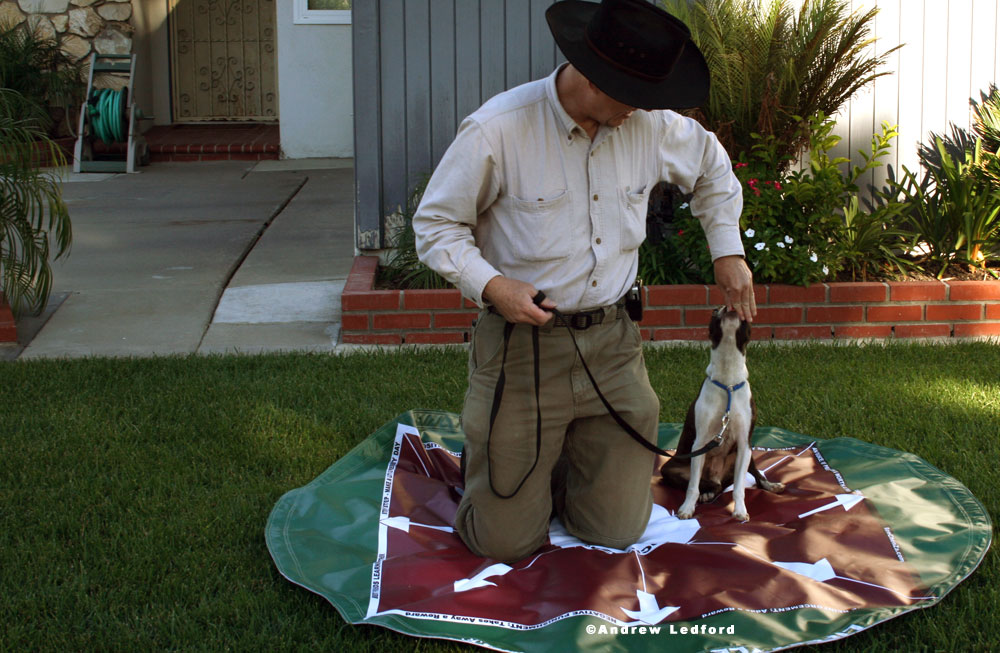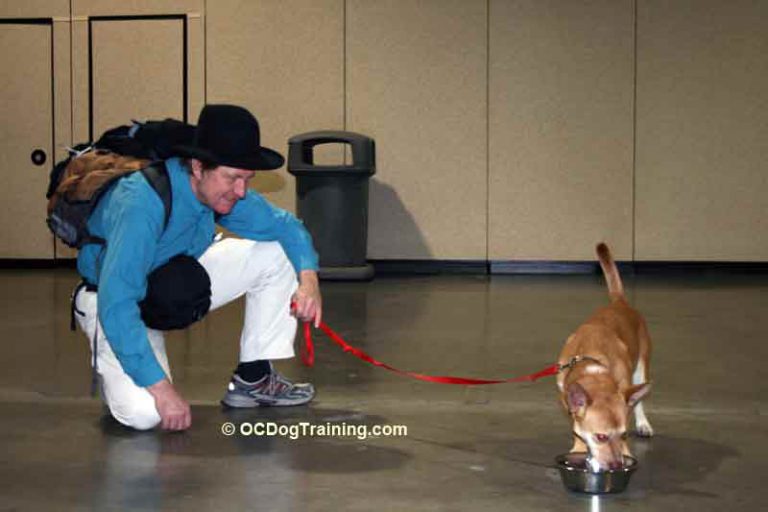Dog Training Without a Leash or Clicker
Natural Dog Training Without a Leash and Collar or a Clicker.
Dog Trainer’s Forum Post – dog training Without a Leash or Clicker.
For more information about my training programs call me at 715-827-4058
Once upon a time at a Southern California Dog Trainers’ forum we had an interesting meeting where many people discussed the various seminars they’ve attended. One person’s account of using novel training techniques that neither the handler nor the dog were familiar with struck me as particularly interesting.
Without familiar training tools, teaching the dog a new behavior was a novel experience for both dog and handler. The purpose of the exercise was to transcend preferences by both the human and the dog.

From the trainers account it appears our dogs are also conditioned to certain familiar styles of training. The dogs reaction to changing training conditions brings up some interesting points. The first is, it may be possible for dogs to learn a learning strategy adapted to the handler/trainer’s preferred training style.
We can observer the co-development of training style and temperament in the field of protection dogs. I’ve known many successful protection dog trainers who have mentioned that in Europe training clubs breed dogs with traits best suited to the clubs style of training. Here we see a feedback loop where the environment affects selection and selection further reinforces environmental contingencies. This would be an example of nature and nurture working hand in hand.
When I hear these stories I always think about Captain Haggerty saying he was a “dog trainer.” Not a this kind of trainer or that kind of dog trainer, but a Dog Trainer. Now many dog trainers I know didn’t like Captain Haggerty or his style of training, but I liked the Captain. He wasn’t a clicker trainer or a leash and collar trainer but he was an extremely knowledgeable Dog Trainer.
Even though the Captain is no longer with us he can still teach us many good lessons about dog training. One of those lessons is to move past our prejudices for or against training methods.
I like positive reinforcement training. But I recognize the limits of teaching with all positive reinforcement. The biggest problem with positive reinforcement training is that positive reinforcement is not the default behavior of people under aversive control. Most people contact me because their dogs are doing something they don’t like. If you don’t like a behavior, that behavior is most likely aversive. The fist response most people have to adversity in their lives is emotional. That emotional response is the precursor to action. The action is usually behavior performing tit for tat, adversity for adversity, to the one causing discomfort. Seldom do we want to reward those who cause us trouble. Desires and wants are also emotions.
I do think as a culture we can learn how to be more positive reinforcement oriented. I also think that dog training is one of the best places to learn how positive reinforcement works. But, I do not think I have ever met what I would call an all positive reinforcement dog trainer. However, I have met plenty of dog trainers who primarily use positive reinforcement dog training techniques.
When someone hires me they are expecting results and I try to give them results with training techniques they can implement with the least effort and most ease. Even when I work with and complimenting the owner’s human nature, there is still a huge amount of new information the owner/handler needs to learn. The handler also need to develop new behavior patterns. While learning new behavior they also need to change many old behaviors. I can often change a new handler’s orientation towards reinforcement theory and techniques with a package of lessons. However, it’s much more difficult to change their emotional responses to aversives stimulation in the same amount of time. It’s also unlikely I can change years of learning and conditioning within the time it takes to train the dog. However, learning the positive training techniques can begin to condition new patterns in the handler as well as the dog.
If someone really wants to change their moral character and how they interact with others I have developed two seven step programs. At this time I have not found too many people who want to change from a competitive and confrontational orientation to an accepting all positive one. For the time being I will match my training techniques to the underlying orientation of the paying owner/handler.
Wishing you the very best in dog training and in life
Andrew Ledford
I can be reached at 714-827-4058



